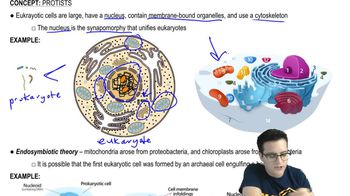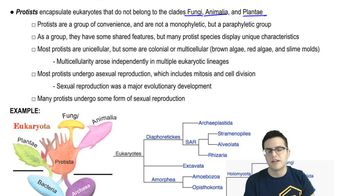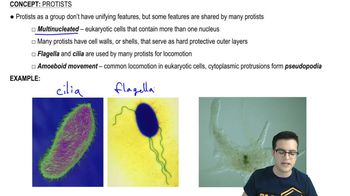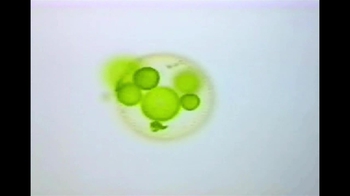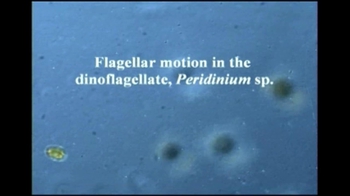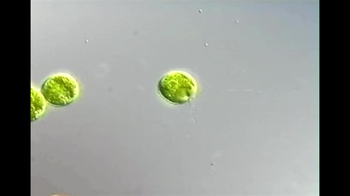27. Protists
Introduction to Protists
27. Protists
Introduction to Protists
Additional 12 creators.
Learn with other creators
Showing 15 of 15 videos
Practice this topic
- Multiple ChoiceWhat percentage of the world's photosynthesis is carried out by protists?
- Multiple ChoiceHypermastigotes are important endosymbionts that live in the guts of __________.
- Multiple ChoiceThe placement of all protists in one kingdom caused dissatisfaction among taxonomists mainly because __________.
- Open QuestionWhy are protists considered paraphyletic?a. They include many extinct forms, including lineages that no longer have any living representatives.b. They include some but not all descendants of their most recent common ancestor.c. They represent all of the descendants of a single common ancestor.d. Not all protists have all of the synapomorphies that define the Eukarya, such as a nucleus.
- Open QuestionWhat is a transition state?a. the shape adopted by an enzyme that has an inhibitory molecule bound at its active siteb. the amount of kinetic energy required for a reaction to proceedc. the intermediate complex formed as covalent bonds in the reactants are being broken and re-formed during a reactiond. the enzyme shape after binding an allosteric regulatory molecule
- Open QuestionEvaluate the following statements regarding motility in protists. Select True or False for each statement.T/F Amoeboid motion is common in species with cell walls.T/F Some protists use flagella to swim.T/F Some protists use cilia to swim, which are shorter and more numerous than flagella.T/F Amoeboid motion requires ATP and interactions between the proteins actin and myosin.
- Open QuestionIf you were to expose cells that are undergoing aerobic respiration to a radioactive oxygen isotope in the form of O2, which of the following molecules would you expect to be radiolabeled?a. pyruvateb. waterc. NADHd. CO2
